In my archives I have a book commemorating the reconstruction of the Bridgewater canal following a massive breach that occurred in 1971 – and the surprise is the same thing has happened again at pretty much the same location – except this time its much worse than previous. Its not the first canal breach I have known of, indeed one I had to attend to was the Coventry breach in 1978 and have seen several others. Indeed there was a substantial breach nearby at Dutton on the Trent and Mersey canal in 2012. Fortunately this didn’t affect the Bridgewater because of Dutton stop lock – which was intended to prevent water being lost the other way!
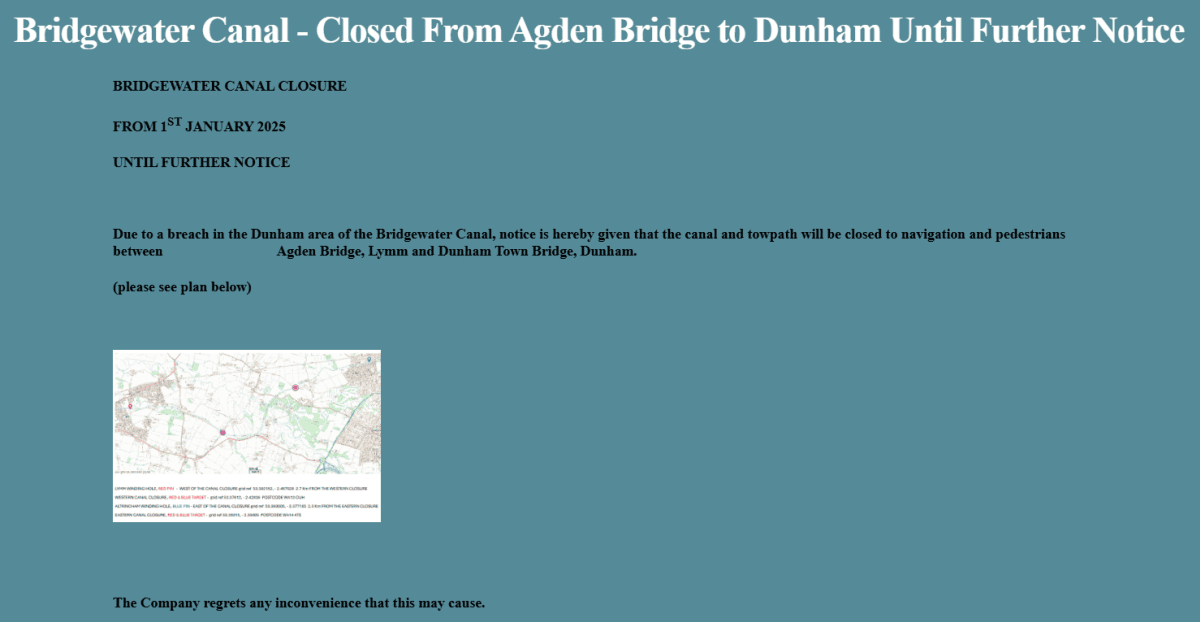
Bridgewater canal stoppage notice. January 2025. Bridgewater Canal/Peel Holdings.
The Bridgewater is one canal I wrote about nearly fifty years ago, and that because I was living on a boat there for sometime. I encountered one of the country’s last traditional wooden boatbuilders (plus a photographic record of that work) and also met one of the waterways system’s last surviving Number ones. The doubtful future that faced the Bridgewater canal in the 1970s was due to the previous breach of 1971. The canal was owned by the Manchester Ship Canal thus the Bridgewater had an uncertain future because it was no longer a viable asset in terms of the MSC’s portfolio.
The MSC had the unenviable responsibility of repairing the breach of 1971. In comparison to that, this latest breach is no doubt the biggest I have known, its no doubt much bigger than the one that occurred not too far away at Prestolee in 1936 (see this dramatic photograph).
The breach occurred at Dunham Massey (not too far away from the famous hall of the same name) sometime before 6.30am on 1st January 2025, probably around 5.45am or thereabouts. There however is some possible evidence the canal was already leaking badly prior to this time for records of the water levels in the River Mersey show a spike at around 2.00am before levelling off a bit following a period of heavy rainfall. And then around 05.30am that shot up again forming a huge spike.
Some of the narrowboaters were woke up in the early hours by their boat being sat on the canal bed. At this point the breach wasn’t at its greatest thus water levels were a couple of feet down. The damage was no doubt underway because even though the water levels were not that far down, what was problematic was the huge volume of water coming along the canal and that is because the Bridgewater canal is acknowledged as the longest level stretch of canal in the UK – totalling around forty miles or so of water.
Several extra centimetres depth in the Bridgewater Canal after two days heavy rain. This is a canal with no locks. pic.twitter.com/BVENIo1NaZ
— Matt Dalby (@soundpoet) January 1, 2025
There is no doubt the canal had overflowed substantially (see picture above) thus this was a cause of the breach.
The embankment in question according to the MSC was the canal’s largest structure standing at a height of 34 feet above the River Bolin and an aqueduct carried the waterway over the river. In 1971 a hole some ninety feet wide was made and some 20,000 cubic yards of material had been washed into the river below. The breach also affected the nearby Woodhouse Lane aqueduct – which had to be rebuilt at a cost of around £190,000.
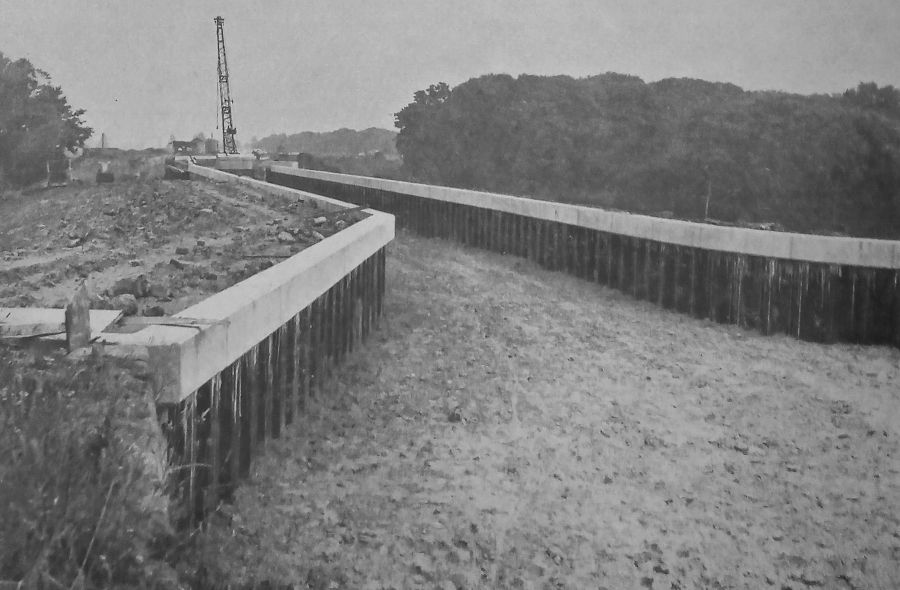
The site of the previous breach is pictured here with work to rebuild the section nearly complete. 1972/73. The cost then was £250,000. Image from The Bridgewater Canal Reopening 1973 – Author’s collection.
Anyhow, the 2025 breach occurred near where a similar one took place in 1971, so there is some possibility the canal hereabouts had a weak point, perhaps it was the nature of the infill used to build the embankment which ultimately weakened the entire embankment and caused the collapse. Who knows. But anyway, collapse it did, and the first instance of that took place had possibly occurred around 02.00am. That probably sort of well, plugged itself, for a short while, but the water nevertheless continued to scour underneath the piling and that intensive erosion of the embankment’s foundations eventually caused the piling to collapse. With around forty miles of water (extending right back towards Leigh in the north and Dutton stop lock in the south) and constituting a force of unmeasurable magnitude, the pressure caused the embankment to burst open completely. That occurred around 05.30am to 05.45am on 1st January 2025.
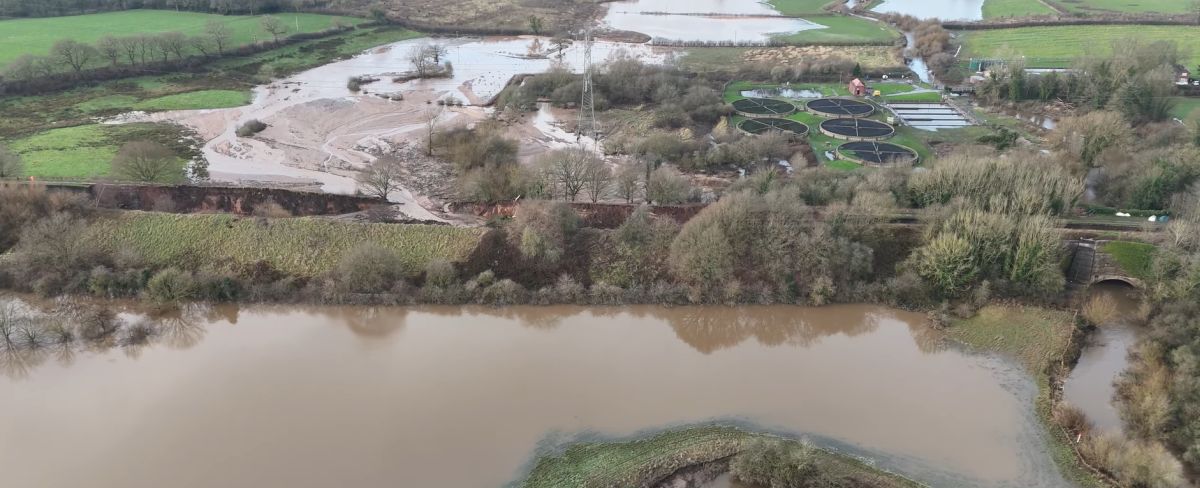
Drone view of the damage caused – the Bridgewater canal can be seen running left to right. The breach area is slightly left of the centre, and at the extreme right can be seen the Bolin aqueduct. Youtube.
The amount of destruction to the embankment that was filmed by a number of people was of gigantic proportions. The destruction continued because a large amount of water continued to cause damage to the still standing parts of the destroyed embankment – and that because a considerable amount of water was still getting past the stop planks.
Stop planks are a preventive measure used to arrest the loss of canal water when issues arise, but because the nature of the canal bed alters somewhat over time, the actual shape where the bridge narrow are and the stop planks need to be placed, its no longer the flat profile it should be and this is because of mud deposits, gravel, even rubbish that has sunk to the bottom of the canal. Hence the stop planks are the first emergency measure, after initially attempting to clear the canal bed with a keb (either traditional or modern) and then immediately following this sand bags and other things such as loose sand, fly-ash or similar should be employed. One last possibility would be. what has been done in the past, is to fill the space behind the stop planks with puddling clay.
Indeed the canal workers later did much of the above work and they also used plastic sheeting as well to try and quell the huge volume of water escaping past the stop planks – this can be seen in this video from Trooperwolfie. No doubt the workers had tried many ways of plugging the leaks and yet this continued somewhat, but this being a holiday period, they were probably overwhelmed in terms of the manpower that was needed to tackle the issue. As is often the case with the unexpected where things occur to an unimaginable extent, the canal’s management were unfortunately caught on the hop.
National Trust staff were also seen about the area surveying the damage and taking photographs. No doubt they were very concerned because of the proximity of the NT’s famed Dunham Massey house to the breach as reported in the Manchester Evening News. The house’s grounds are just 300 metres or so from the breach.
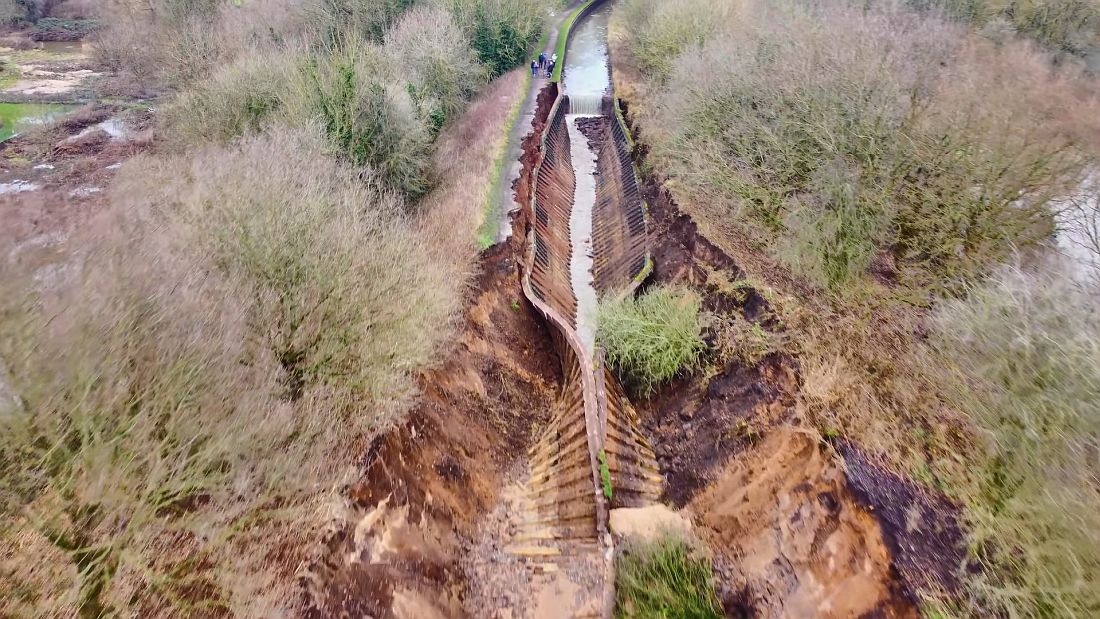
The 2025 breach with the narrower 1972-1973 rebuilt section beyond which held up in spite of the new calamity. Youtube.
One of the most sobering sights is exactly how the section that was involved in the 1971 breach has withstood this 2025 calamity whilst the section of embankment beyond collapsed. The fact the piling was driven so deep hasn’t mitigated the collapse as seen on Trooperwolfie’s video. This other video from Property FPV Drone Tours shows a flight along the 1971 breach section (which was of course rebuilt and reopened in 1973) and then flies over the New Years Day breach itself.

How the 1971 breach was discovered. Paragraph from The Bridgewater Canal Reopening 1973 – Author’s collection.
What happened in 1971 basically repeated itself in 2025, this time with a far more devastating result. When that earlier breach occurred, in the aftermath it was thought the process had involved ‘a complicated leaching process which had continued over the two hundred year life of the embankment.’ (Bridgewater Canal Reopening 1973). It seems likely the same process had continued throughout the embankment and with the huge amount of rainfall in the New Year, the canal embankment simply succumbed.
There’s a huge difference between the older breach and the later one – the amount of rainfall during the New Year 2024/25 was incredibly vast. Its not just that, the speed with which the older breach (eg the later time it occurred) got tackled no doubt had some bearing in keeping that to a minimum – whereas the scope and scale of the present was on such a scale such that the available resources and staff who were called up urgently (this at a time when everyone should have been on holiday and enjoying the New Year) no doubt took time to get together – the breach had by then done a vast amount of untold damage.
Any comparison with the 1971 breach (as I indicated yesterday) was how fast the response had been back then. With more advanced equipment and a superior communications network these days the New Year 2025 response ideally ought to have been even better. Not only that, the means of quelling the flow of water simply needed to be more efficient. The inquiry that will no doubt be conducted in due course will establish what had happened and whether the responses made were as they ought to have been.
The other thing to note is the stop planks kept failing, they broke, because they were completely rotten. Stop planks should always be in good condition and should be easy to inspect – and if possible defects are seen they ought to be replaced – yet its clear what was being using was not fit for the purpose intended.
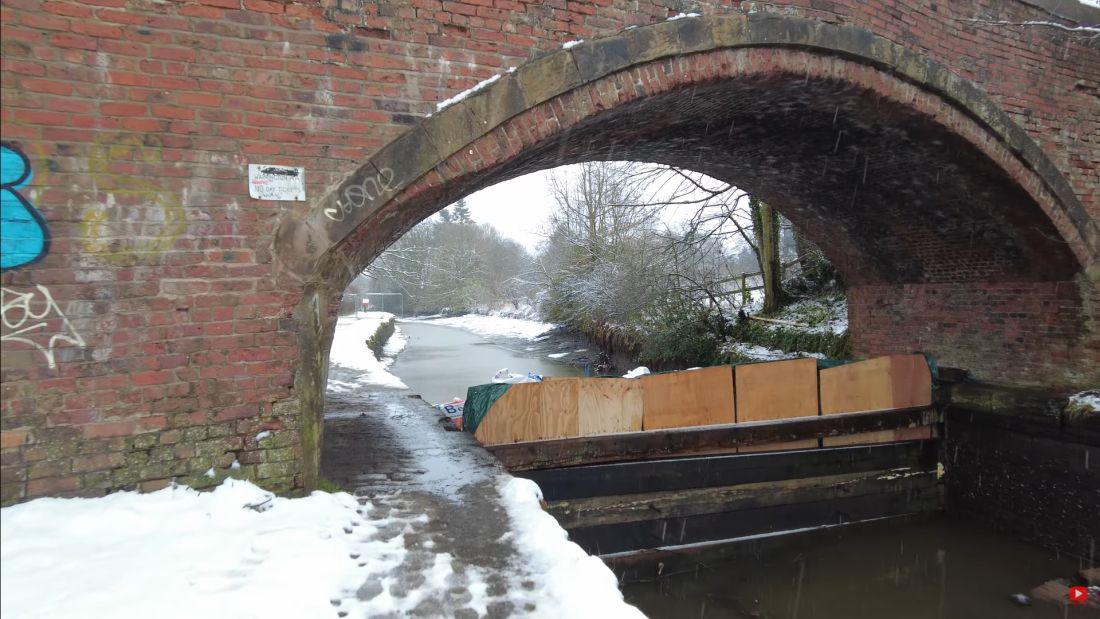
Stop planks that have clearly broke due to being rotten & breaking under water pressure. Its why they’re having to resort to the use of plywood in order to stop the whole thing collapsing. Youtube.
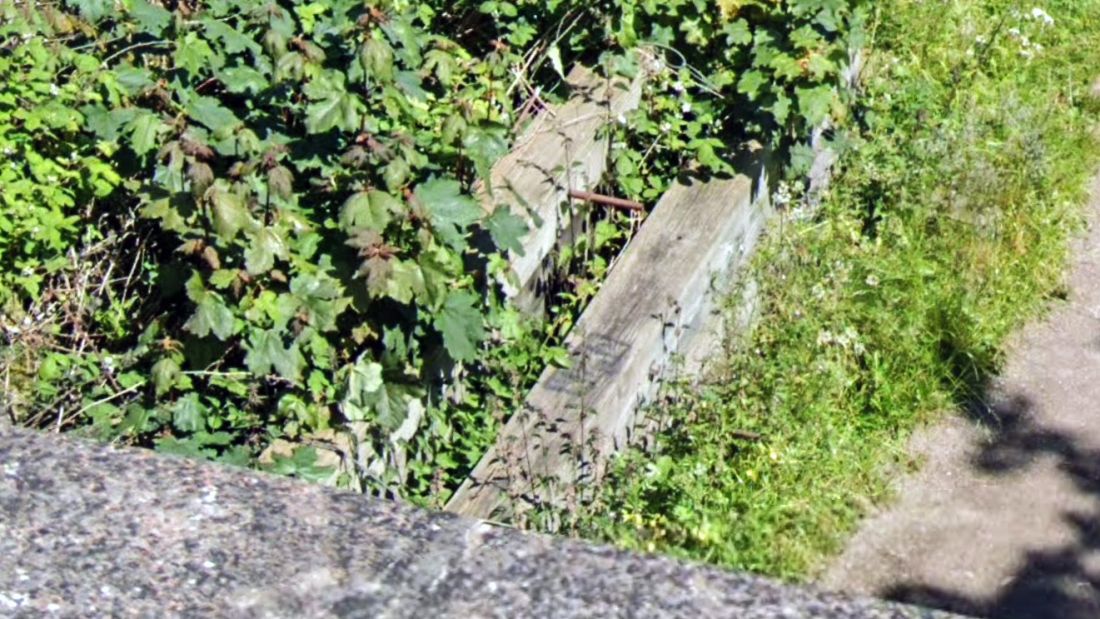
How the stop planks at Back Lane looked in 2023. Seemingly not too well looked after. They should have been kept free of foliage in order to ensure the planks were in optimal condition and also to be easily inspected. Google Streets.
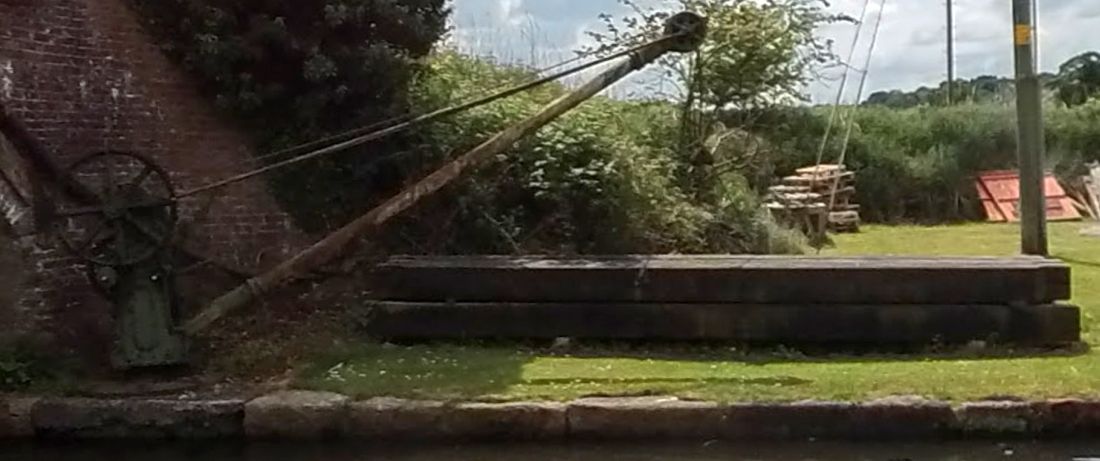
In retrospect the stop planks used at Agden bridge were far more successful and that because these were in a much better condition as evidenced by this Google Street view from 2023. Its not to say the work was completed at the time because there was still a substantial leak that needed to be plugged by other traditional methods. At least one can see the quality of the stop planks used here were far superior to those used at Back Lane.
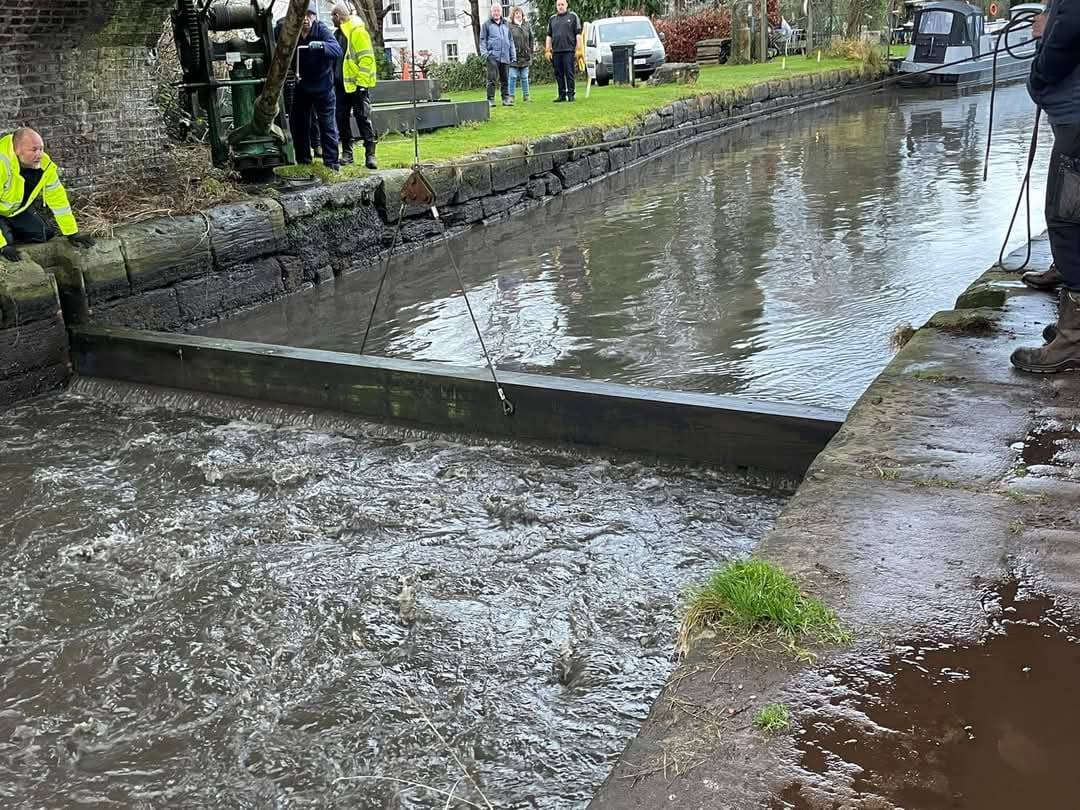
The stop planks going in at Agden bridge. Canal World forum.
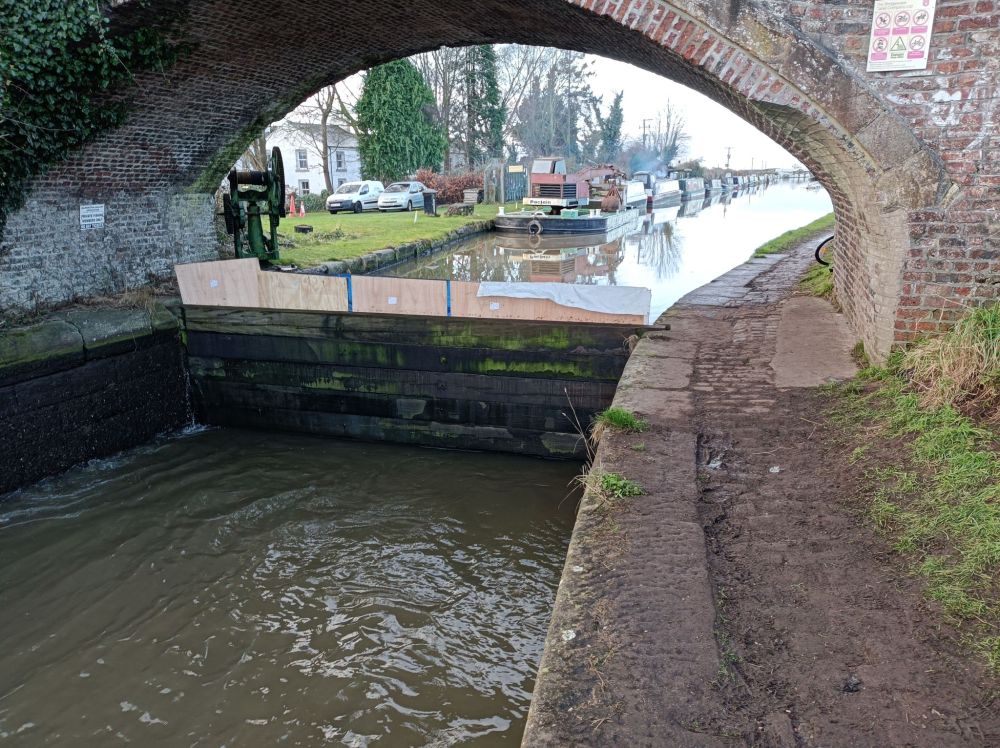
Agden bridge now has sheets of plywood too to stem the leaks still coming through here! What happened to ash, sawdust, sand and the other traditional things once used to seal the gaps? Facebook.
How long before the canal reopens?

One of the many breaches to occur on the Llangollen canal. This was in 1960. Greg Afloat.
One other aspect is the concern at how long this will take to repair. Well I think its going to be in the region of four years. This is just my assessment based on the length of time I have seen with other breaches and their location. Those recent ones on the Llangollen canal high above the River Dee near Trevor (of which I have direct experience of at least one) were difficult because they were isolated and no road access existed – and these took a whole year each time (there have been others too further back in the past) and a substantial length of canal had to be rebuilt before it could be reopened.
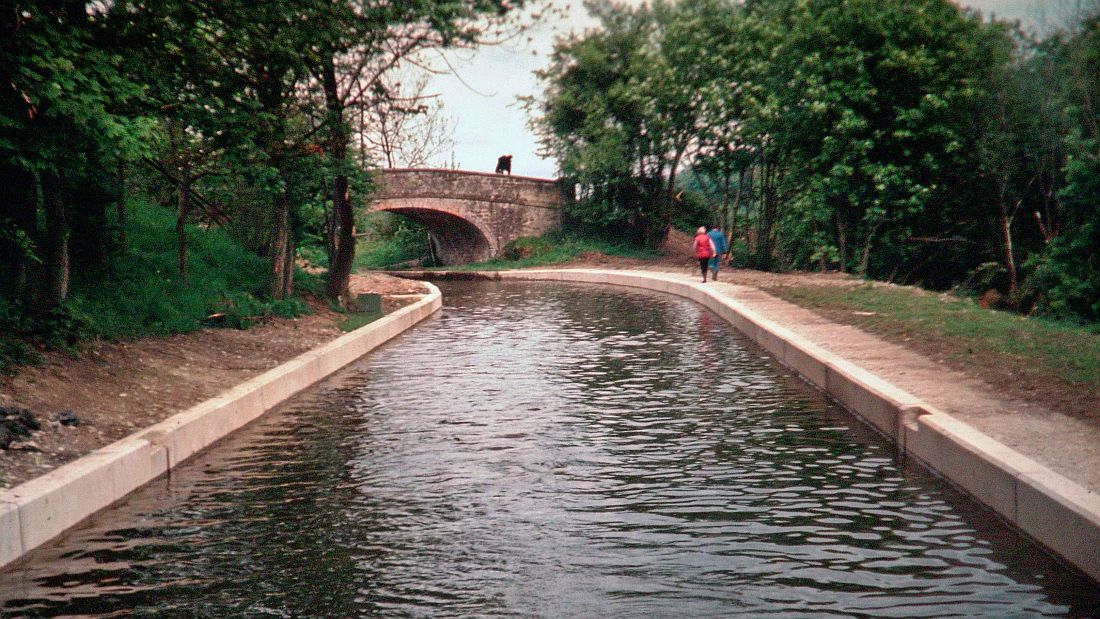
The Llangollen canal at Bryn Howell the day it reopened in 1983. The 1982 breach was to the right. Another breach soon occurred and that also took the best part of a year to fix. Author’s photograph.
In one particular instance the Llangollen canal had to be turned into a road in order for contractors to and their equipment to access the worksite. (In one of the instances related to these breaches I am indeed mentioned in the news). See the pictures shown here which illustrate the damage that occurred back then (compare with my photograph of the repaired section shown above) – yet its not anywhere near what’s just happened on the Bridgewater. The rapid turn round on the Llangollen is in part because its a very busy waterway and many lives and businesses depended on it. Not only that, its a major water supply channel too – its the means by which a large part of Cheshire and Shropshire receives their water. Thus the response to any calamities on the Llangollen is generally much faster than other waterways. Other waterway breaches than the Llangollen may take longer, a year and half or two perhaps. The previous Bolin disaster of 1971 saw two years pass before the canal was reopened.
In retrospect those breaches on the Llangollen are nothing like what’s happened at Dunham Massey. Evidently the whole Bolin embankment, not just part, needs replacing, there’s no road access to the site, they can’t even use the existing canal bed (the remaining bits in water which will at some point need to be drained and made into a road in order to bring materials to the site at a later point) because that isn’t even going to take the contractors to where they need to be.
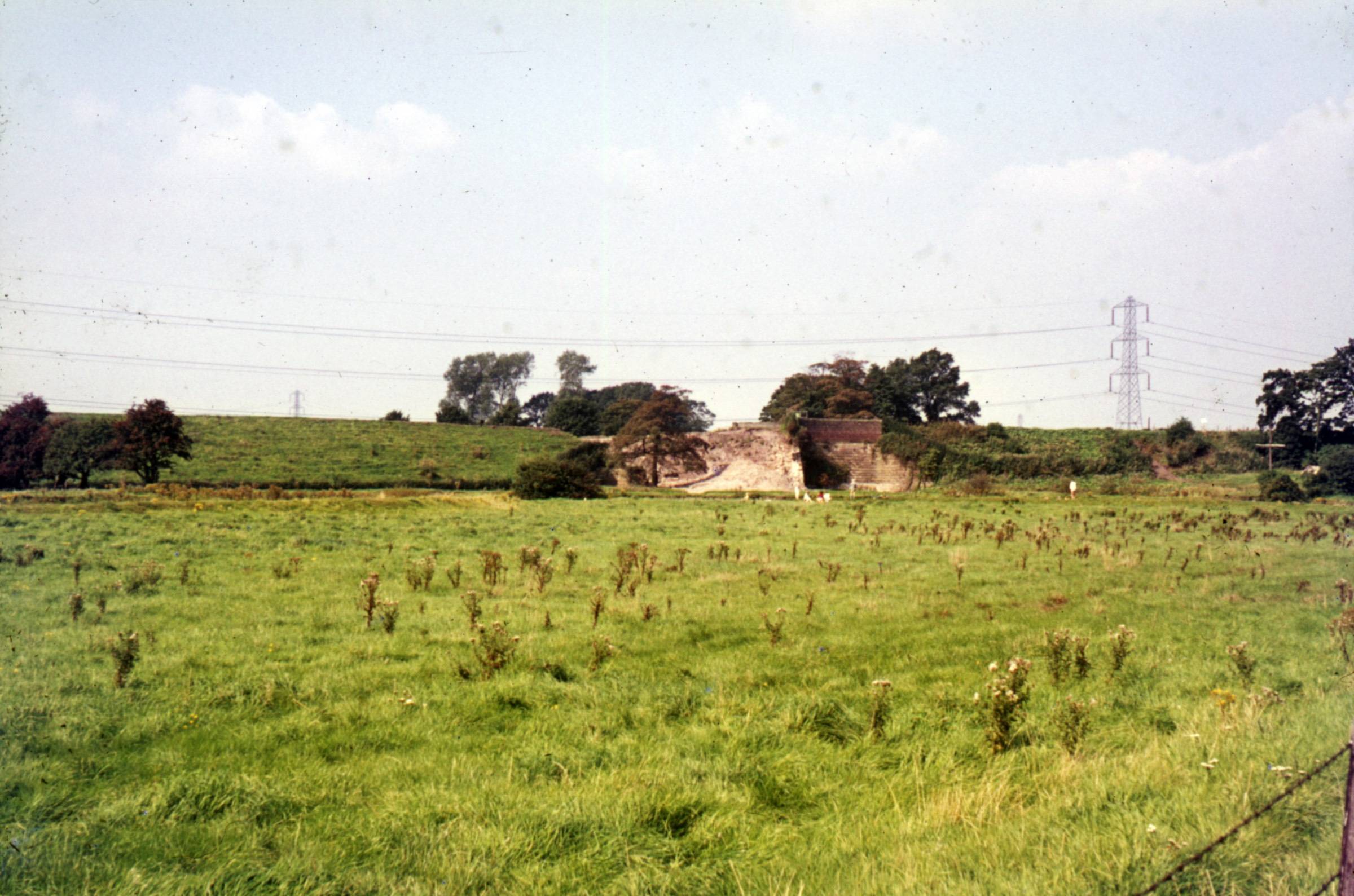
The extent of the 1971 breach is very clearly miniscule compared to that in 2025. Take a look here as well as at Canal World (from where the above picture was sourced). The size of the 1971 breach can be compared with the Bolin aqueduct next to the gap. The 2025 breach must be ten times bigger! In 1971 the gap was ninety feet whilst in 2025 its about 150m (500 feet).
The whole embankment (or what remains of it) is without a doubt totally useless. The only solution is going to be a major engineering job costing maybe 50 to 70 million in total (including removal of the existing structure and resettling the ground and surface features in order to provide a completely solid foundation for any new structure that will be built). Since the whole embankment needs replacing it will have to be excavated and taken away in lorries. I would think at least 300 metres or so would need to be removed (from where Park Lane aqueduct*** is to the start of the 1972-73 rebuilt section. and then the whole structure rebuilt from the ground up. It might be quicker, better even, in terms of the scope of the work needed, to build a brand new aqueduct across the Bolin valley instead. Whichever way it happens, a substantial road to the site is no doubt going to be necessary and that also costs money. I would only hope the canal’s owners have substantial insurance in place to mitigate some of the costs that will arise.
Updates 5th January 2025
***Park Lane aqueduct is probably considered a dangerous structure now. Its because the canal bed has been scoured so much that the top of the arch over the roadway is partially exposed and the area either side of the aqueduct is closed off. The road was closed a while back, however continued water flow and erosion means the structure’s integrity is likely compromised.
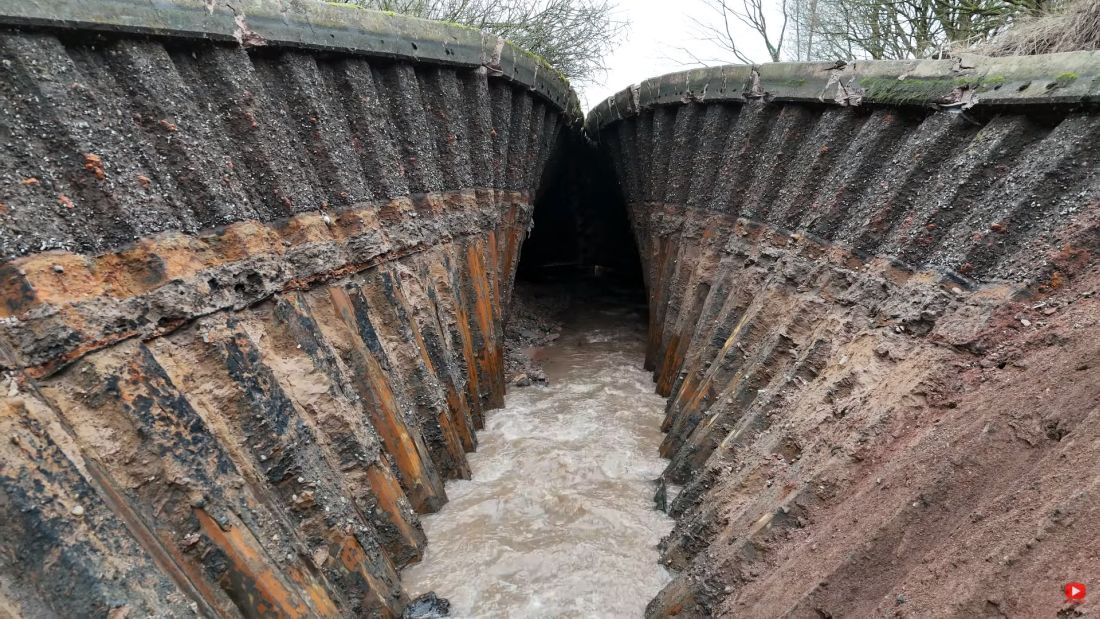
Someone’s taken to filming quite closely (via drone) the aftermath of the breach! Youtube.
The very leaky canal above Back Lane has now been isolated. A bund has been placed at Dunham School bridge (as was thought would be done yesterday as the Taylors Aboard showed on their videos). Pics of the bund can be seen at Canal World. What this means is the Bridgewater is now cut off there and there is no water between here and Back Lane. With the dropped water levels, the botched attempt to plug the canal at Back Lane with all manner of stuff is now visible for all to see.
Post on the possible causes of the embankment failure by Dave Petley, a geological expert who says ‘The repair of this section of the canal is going to be long and expensive.’
Update 6th January 2025
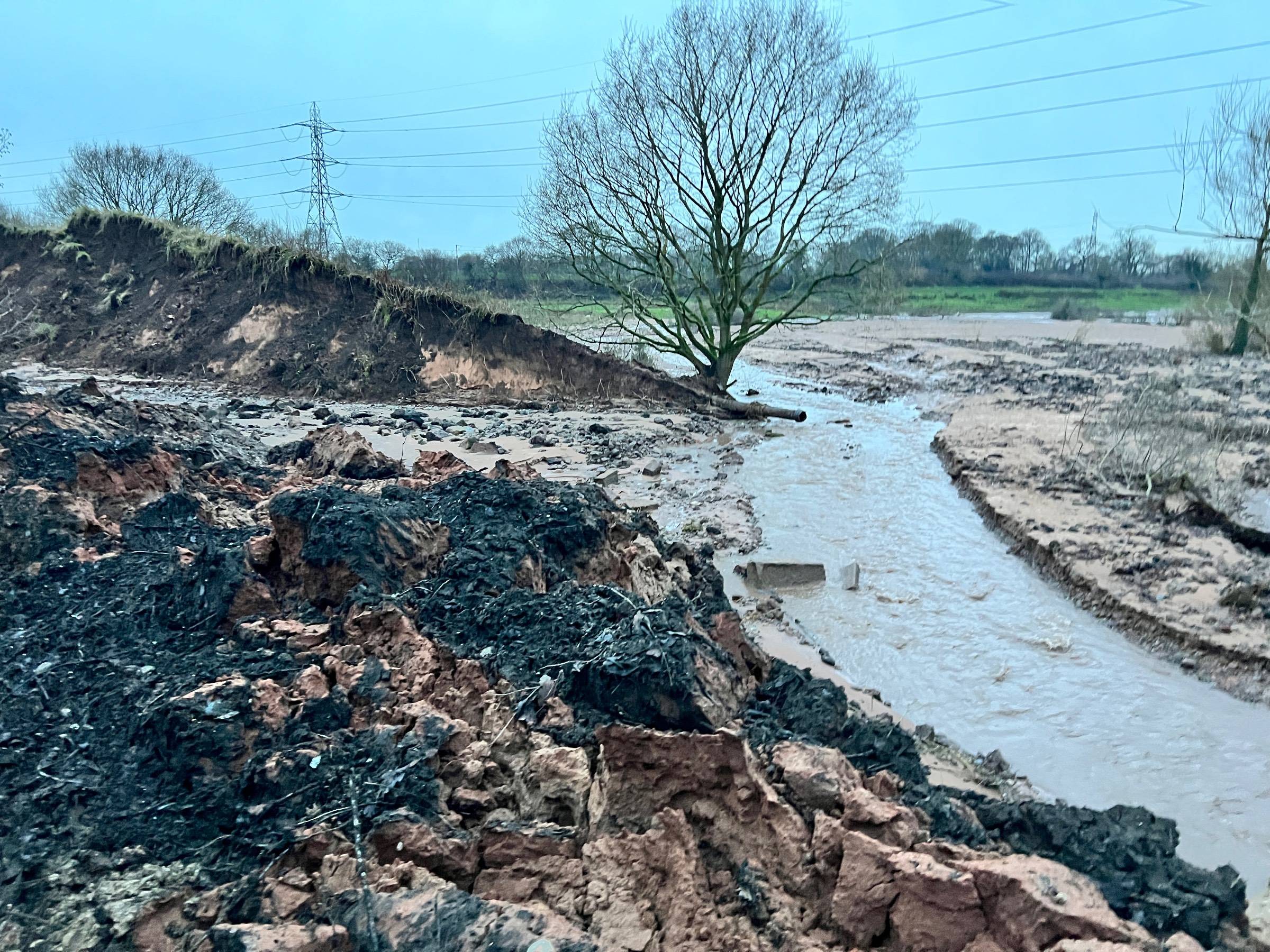
View of the breach from ‘ground zero’. The location is roughly where a small culvert underneath the canal once existed. Canal World.
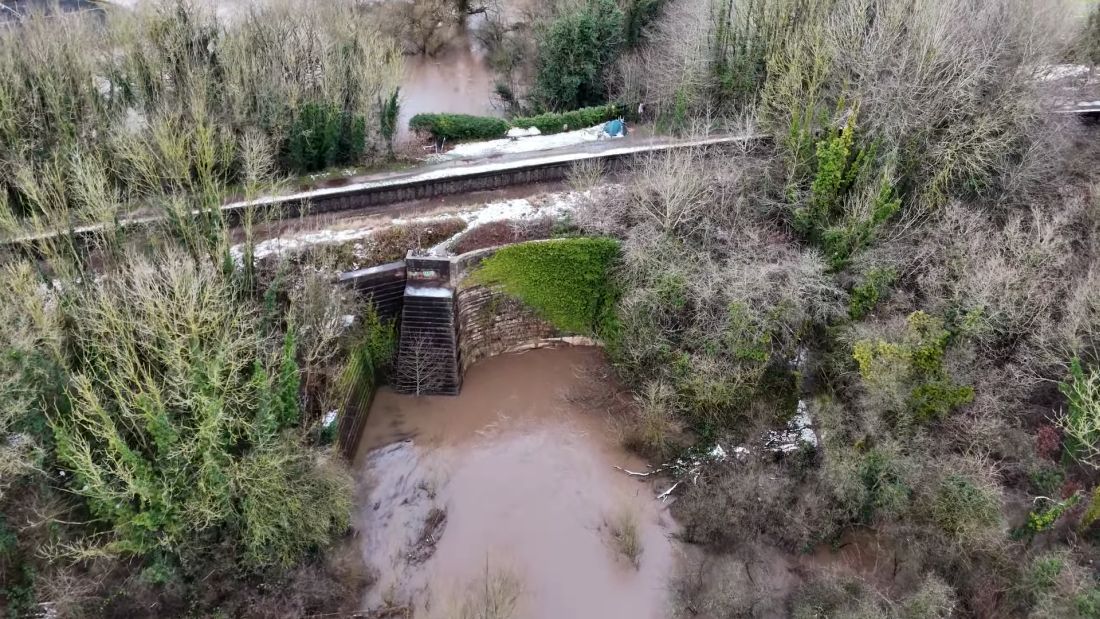
Good view of the Bolin aqueduct with the river very swollen, barely getting under the aqueduct’s arch. The 1971 canal breach was just to the left. Screencap from Richard Nurse’s video on Youtube.
Update 8th January 2025
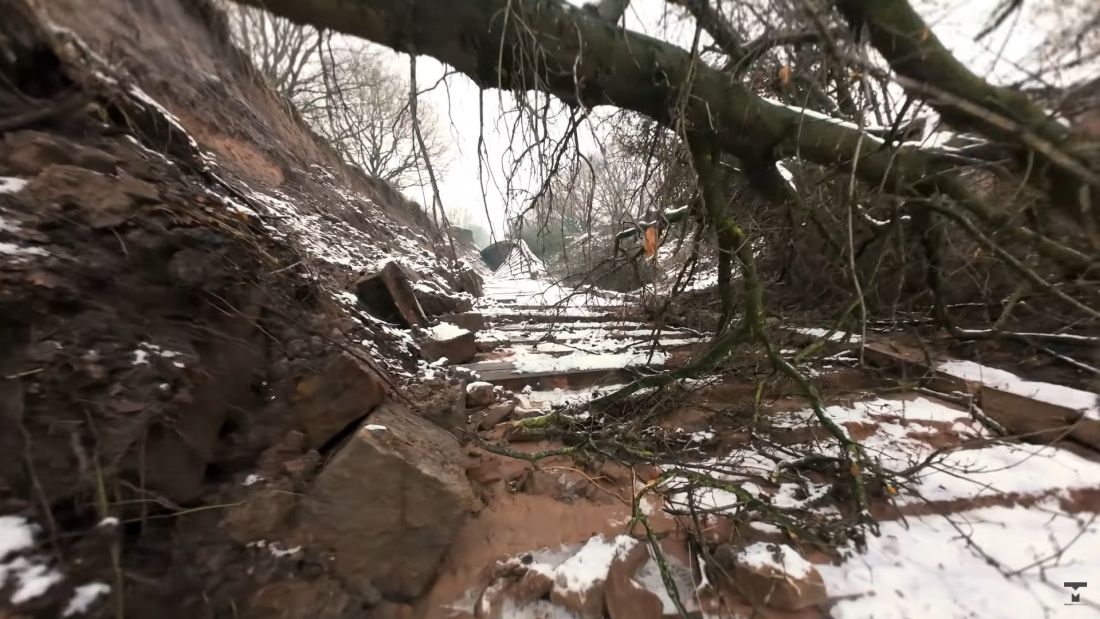
Incredible! Property FPV Drone Tours did some very daring flights today thus some extreme views of the breach site. One of these was flying the drone underneath a fallen tree at ‘ground zero’! Youtube.
The main feature image is of the 1971 breach on the Bridgewater Canal at Dunham Massey.
The post was originally done in two parts. These have been merged and the contents shortened somewhat.
Here’s a list of London Rail’s other posts with a canal flavour:
The Cromford canal at Butterley (2024)
Daneway (Thames & Severn canal) (2024)
The Paddington shop that wasn’t there! (2024)
Tis wasn’t Robert Browning’s doing! (2022)
King’s Cross tunnels and canal aqueduct (2021)
Thomas Telford in detail (2021) includes Pontcysyllte, Chick aqueducts and Neptune’s staircase
Brindley at Wet Earth Colliery (2020) including Fletcher’s canal
Whatever happened to Brunel’s bridge? (2019)
The Coventry Canal (2019)
Toddbrook reservoir (2019)
The Grand Surrey Canal (2018)
